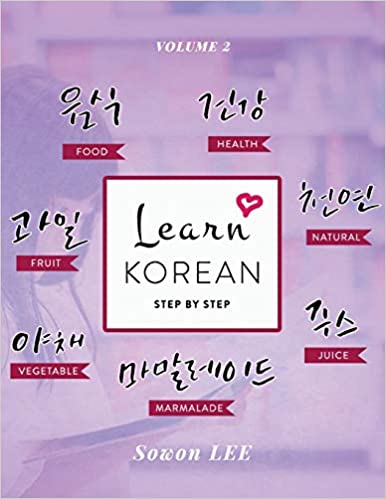
The Korean Alphabet 한글 [Hangeul] was invented or created to make it the easiest to learn and it’s, indeed, one of the easiest alphabets to master.
So, let’s start with the history of Hangeul.
History
Hangul or Hangeul was created in the 15th century, exactly in 1446, by one of the greatest kings in the history of the Korean peninsula or what it was called at the time ‘Joseon’, Sejong the Great. And the reason behind that is simple. Sejong the great cared a lot about his people, and since Koreans used Chinese characters or 한자 (hanja) to write in ancient times, the literacy rate was low and only scholars, nobles, and aristocrats had the privilege to study and learn Chinese characters. Whereas, the lower social classes like commoners, peasants, and slaves were illiterate for the simple reasons that, whether they couldn’t afford to have a teacher to learn the complicated Chinese writing system (Hanja) or they were simply not allowed to be educated because of their status. Of course, the use of 한자 (hanja) is now limited and Korean is mainly written in 한글 (hangeul) ever since King Sejong the Great personally invented it.
Now, if you’re thinking that Korean is going to be extremely difficult and that it might be almost impossible to learn how to write and speak, then you’re probably wrong!
Internationally, a large number of linguists believe that the Korean writing system should be universal because the written Korean characters are drawn to represent the shape of the mouth when it makes that sound. It seems easy, right?
The Korean alphabet was originally called Hunminjeong’eum (훈민정음) which means The Correct/Proper Sounds for the Instruction of the People. And, it was created to enable the common illiterate people in hanja to accurately and easily read and write the Korean language.
“A sage man can familiarize himself with them before the morning is over, even a stupid man can learn them within the space of ten days.” A saying about the alphabet that became so popular after the alphabet started circulating among the commoners who were surprised at how fast they could master it. So, if an illiterate man with little knowledge could learn it before the morning is over, I bet you, educated people in the 21st century, might master it before you finish your morning coffee.
First of all, we’re going to start right from the beginning and keep it as simple as we can.
The Korean alphabet
한글 (hangeul) has 24 letters, called 자모(jamo), including 14 single consonants and 10 single vowels. That’s even less than the English Alphabet!
자모 (jamo) are stacked together to form a syllable. We’ll learn more about syllables later but let’s start with the list of consonants:
| Consonant | Name |
| ㄱ | giyeok (기역), or kiŭk (기윽) in North Korea |
| ㄴ | nieun/niŭn (니은) |
| ㄷ | digeut (디귿), or tiŭt (디읃) in North Korea |
| ㄹ | rieul/riŭl (리을) |
| ㅁ | mieum/miŭm (미음) |
| ㅂ | bieup/piŭp (비읍) |
| ㅅ | siot (시옷), or siŭt (시읏) in North Korea |
| ㅇ | ieung/iŭng (이응) |
| ㅈ | jieut/chiŭt (지읒) |
| ㅊ | chieut/ch’iŭt (치읓) |
| ㅋ | kieuk/k’iŭk (키읔) |
| ㅌ | tieut/t’iŭt (티읕) |
| ㅍ | pieup/p’iŭp (피읖) |
| ㅎ | hieut/hiŭt (히읗) |
The double consonants are named with the word 쌍[ssang], meaning “twin” or “double”, or with 된 [doen] in North Korea, meaning “strong”. Thus: ㄲ kk, ㄸ tt, ㅃ pp, ㅆ ss, ㅉ jj.
And 10 main vowels:
ㅏ, ㅑ, ㅓ, ㅕ, ㅗ, ㅛ, ㅜ, ㅠ, ㅡ, ㅣ
- 6 vowel
letters: ㅏ a, ㅓ eo, ㅗ o, ㅜ u, ㅡ eu, ㅣ i - 4 iotized
vowels (with a y): ㅑ ya, ㅕ yeo, ㅛ yo, ㅠ yu - 5
(iotized) diphthongs: ㅐ ae, ㅒ yae, ㅔ e, ㅖ ye, ㅢ ui - 6 vowels
and diphthongs with a w: ㅘ wa, ㅙ wae, ㅚ oe, ㅝ wo, ㅞ we, ㅟ wi
The good news is that Korean letters closely mimic
the shape of your mouth when you pronounce them, making it very easy to learn!
Modern Korean
Modern Korean is written with spaces between words,
which is the main different thing from the writing systems of Chinese and
Japanese. Additionally, punctuation is almost the same as those in English.
You don’t have to worry about remembering every
single alphabet. Step-by-step, we’re going to guide you into the world of
written Korean. By the time you’ve finished this guide, you’ll be keeping a
personal diary in Korean, or writing letters to your Korean friends! What do
you want to do with your written Korean? Picture your goal, and use it as
motivation to learn!
You can also download digital Korean dictionaries to help you learn vocabulary daily such as: Dictionary Linguee
And you can also check out some great Korean learning books on Amazon for beginner, intermediate and advanced levels.

About the Author
Sowon LEE, born in Tunisia, in 1989. At the age of 25 she moved to the United Arab Emirates to work as a Senior Research Scientist. Her passion about languages and her love for books were the spark that ignited her inner fire for writing. In her writing journey, she has written several educational books, arts and crafts books, and also self-help books and motivational books.
On her writing path, and while growing as a writer, she met and interacted with aspiring authors who asked for advice, help, and encouragement and that’s the reason she decided to challenge herself to be the spark that helps light their passion and inspire them to get started.
Her life motto is “Aspire to inspire before you expire” and following the Korean proverb “People make books and books make people” she believes that books are the best gift to the world and to humanity.
Find further help for learning Korean on her website.
